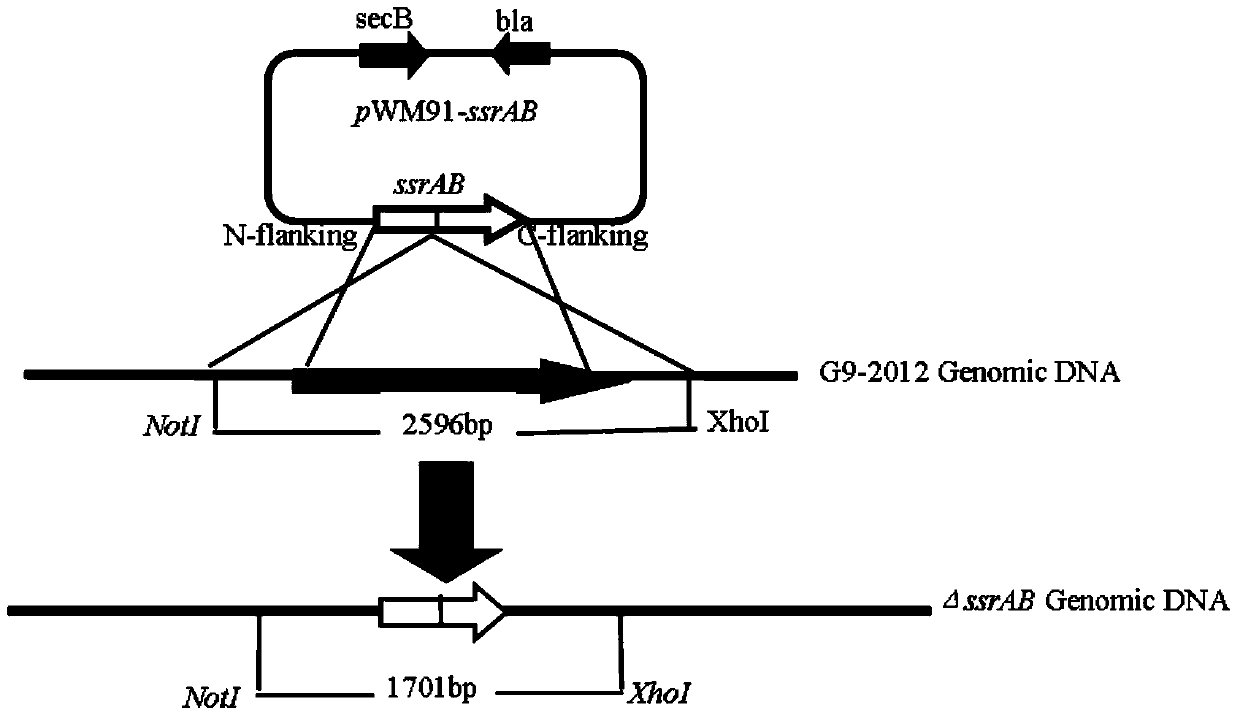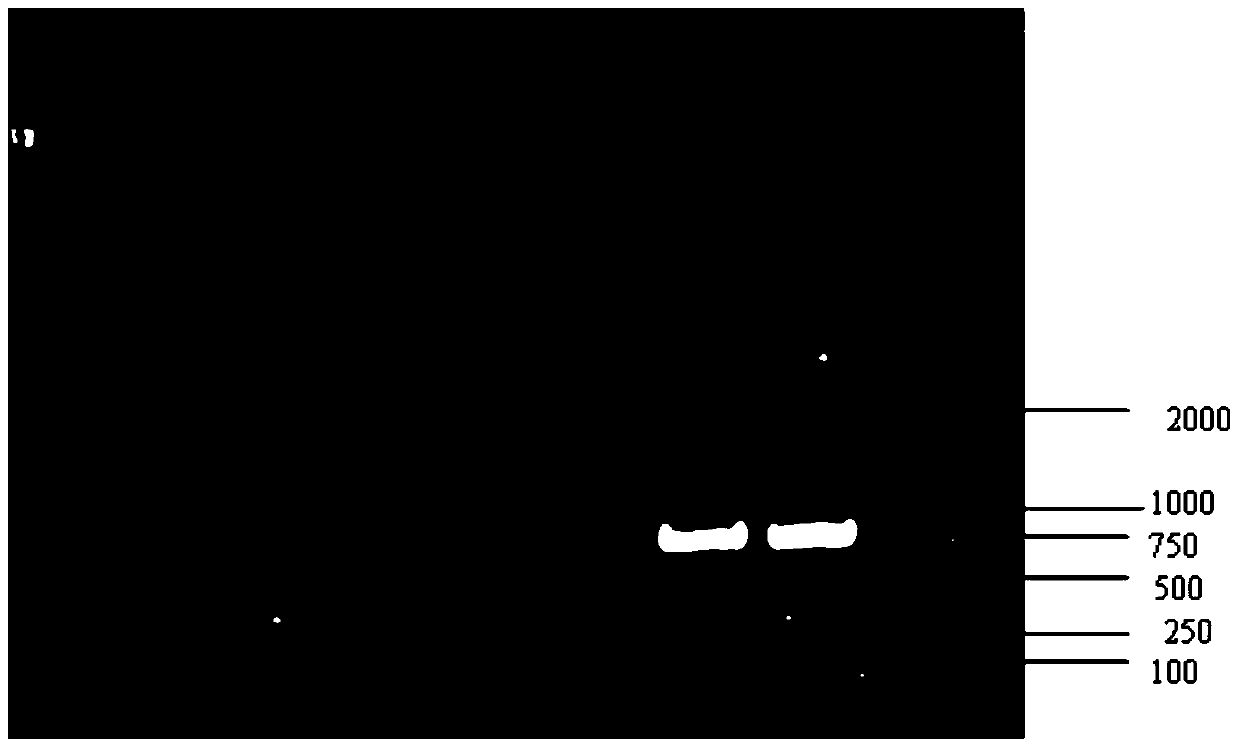A strain of Salmonella enteritidis ssrab gene deletion
A technology of Salmonella Enteritidis and gene deletion strains, applied in the field of gene deletion strain research, can solve the problem of lack of effective methods for pathogenic bacteria prevention and control, etc.
- Summary
- Abstract
- Description
- Claims
- Application Information
AI Technical Summary
Problems solved by technology
Method used
Image
Examples
example 1
[0053] A gene-deleted Salmonella enteritidis, the construction method is as follows:
[0054] 1) Selection of the experimental strain G9-2012: the strains with stronger invasive ability were selected from the strains isolated from pet dogs in Anhui area, and the strain G9-2012 was sensitive to ampicillin through the determination of the drug resistance of the strains, and its minimum bactericidal concentration was less than After continuous culture, a G9-2012 strain resistant to streptomycin and sensitive to ampicillin was obtained. Drug-resistant Salmonella Enteritidis G9-2012 was used as the parent strain.
[0055] 2) Proliferation of G9-2012 and extraction of total genomic DNA: Inoculate the Salmonella enteritidis G9-2012 screened in 1) in liquid LB medium, culture at 37°C until its OD 600 When the value reaches above 3 (12h), take 3mL of the culture, place it in an Eppendorf centrifuge tube, centrifuge at 12830g for 5min, discard the supernatant, add 1.5mL PBS buffer, cen...
example 2
[0077] Study on Growth Characteristics of Salmonella Enteritidis Deletion Strain G9-2012(ΔssrAB)
[0078]After recovering the deletion strain G9-2012 (ΔssrAB) prepared in Example 1 and the parent type G9-2012 strain (WT), the four-section line was placed on the LB solid medium plate to purify the strain, cultured overnight at 37°C, and a single colony was picked , respectively inoculated into LB liquid medium, cultivated at 37°C, and after 2 hours of cultivation, every 1 hour, take 0.1mL of the bacterial liquid of the deletion strain and the wild-type strain, and perform plate counting. The total number of colonies (CFU×10 6 ) is the ordinate, and the culture time (h) is the abscissa, and the counting results of the deletion strain G9-2012 (ΔssrAB) and the parental strain G9-2012 (WT) were plotted into a generative curve to analyze and identify the growth characteristics of the deletion strain. As shown in the figure below, there is no significant difference in growth characte...
example 3
[0080] Determination of Biofilm of Salmonella Enteritidis Deletion Strain G9-2012(ΔssrAB)
[0081] After recovering the deletion strain G9-2012 (ΔssrAB) prepared in Example 1 and the parent type G9-2012 strain (WT), the four-section line was placed on the LB solid medium plate to purify the strain, cultured overnight at 37°C, and a single colony was picked , respectively inoculated into LB liquid medium, cultured overnight at 37°C, inoculated into small finger-shaped test tubes, inoculated with 0.8mL LB medium in each test tube, cultured at 37°C, and discarded the bacterial solution after 18 hours of culture , add 1mL distilled water to wash 3 times, stain with 0.2% crystal violet for 5min, discard crystal violet, rinse 3 times under running water, take pictures after natural air-drying, add 1mL DMSO to dissolve for 2h, and detect at 570nm under UV-Vis spectrophotometer Absorbance A 570 The results were plotted as shown in the figure below. According to statistical analysis, ...
PUM
 Login to View More
Login to View More Abstract
Description
Claims
Application Information
 Login to View More
Login to View More - R&D
- Intellectual Property
- Life Sciences
- Materials
- Tech Scout
- Unparalleled Data Quality
- Higher Quality Content
- 60% Fewer Hallucinations
Browse by: Latest US Patents, China's latest patents, Technical Efficacy Thesaurus, Application Domain, Technology Topic, Popular Technical Reports.
© 2025 PatSnap. All rights reserved.Legal|Privacy policy|Modern Slavery Act Transparency Statement|Sitemap|About US| Contact US: help@patsnap.com



